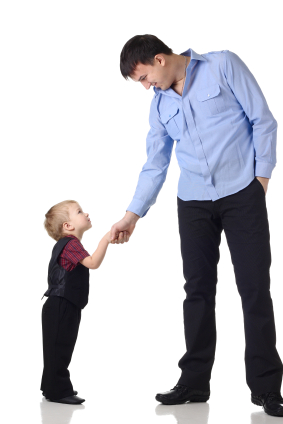July 2012
Maria Doll, certified Etiquette Trainer for Children & Teens with Your Style Matters is guest posting on Family Fun Calgary today.
As parents, we could make the mistake of thinking that our children will learn good manners through osmosis or common sense. Nowadays, common sense isn’t so common and we can often be guilty of not showing the best manners consistently either. As a starting point, our children need to learn the importance of making good introductions. Just like playing any sport or instrument, practice is needed so that it becomes second nature. Good manners come with practice!
When can children practice making introductions? All the time; especially during the summer months when families often plan reunions so relatives can reconnect or when your children encounter the parent of one of his/her school chums. These become great opportunities for helping children make excellent first impressions by making a good introduction.
Here are the 6 Steps for an Introduction:
1. Stand up – especially when the person they are meeting is standing.
2. Make Eye Contact – This shows honesty and openness.
3. Smile! – A smile shows friendliness and is inviting.
4. Extend your right hand – think “web to web”. The web of your hand should touch the web of the other hand. Grasp firmly and shake twice. Connecting the “webs” together prevents both loosey goosey and bone crusher type handshakes.
5. Introduce yourself: Say “Hello, my name is Robert”.
6. Respond in Kind: Saying “Pleased to meet you, Susan” in return will help you remember their name. If the person is an adult, children should use the correct honorific, for example – Mr., Ms, Mrs, Miss, Dr., and the last name. It’s not correct etiquette for children to use the first name of a non-related adult who hasn’t given permission first.
Practicing these steps will result in introductions done well and with confidence. Consider role-playing with your children using silly hats and funny fictitious names before any event to help reinforce these steps. Even children as young as three years old, can learn to say, “Hello”, give eye contact and shake hands.
When the children go back to school, they will look forward to meeting their new teachers and using their new skills, and you can also encourage your children to introduce their friends to you. Routine and knowing what is expected are very important for children in order to feel safe and secure.





